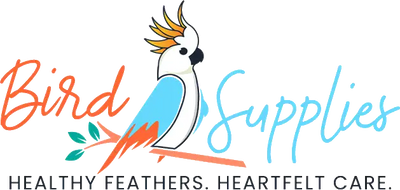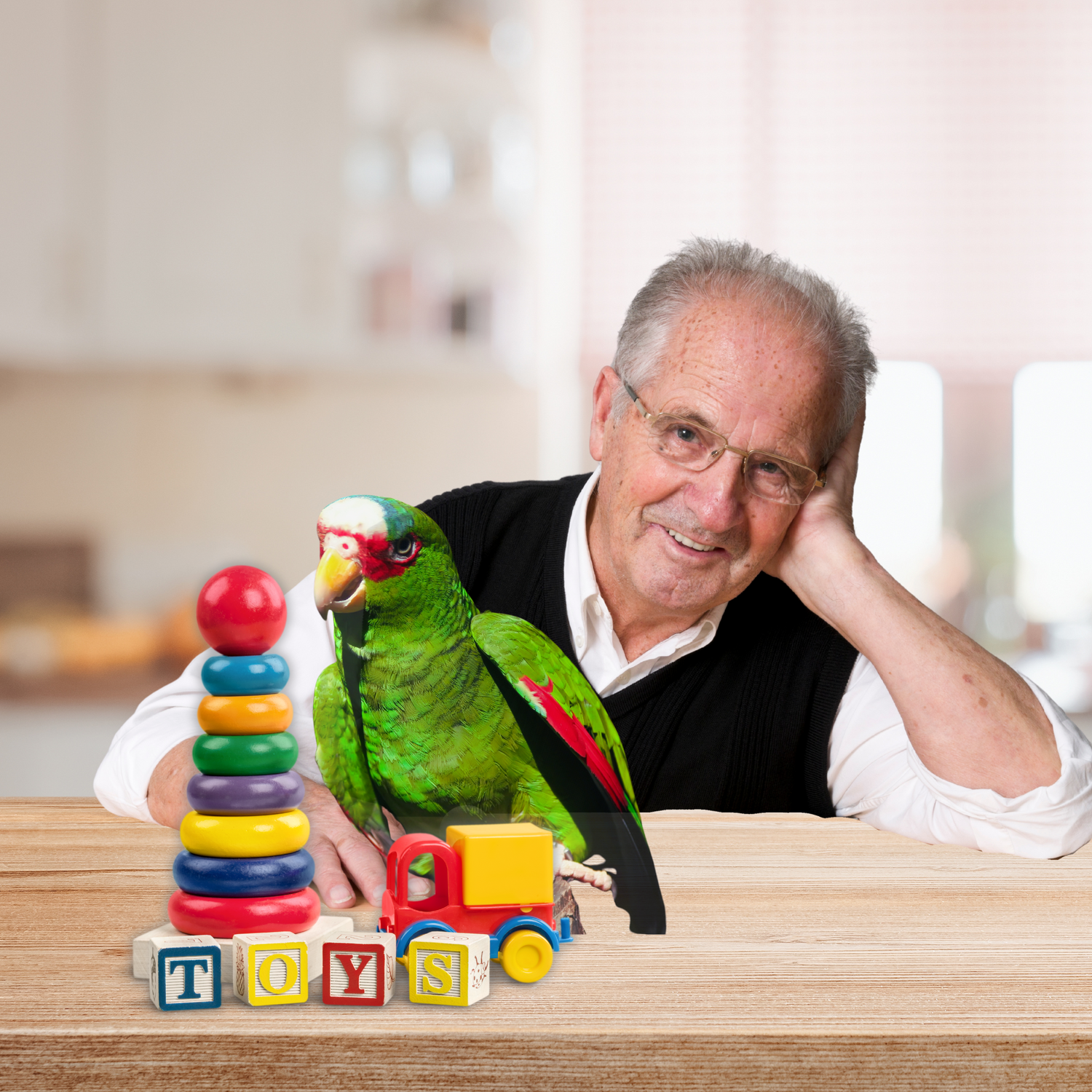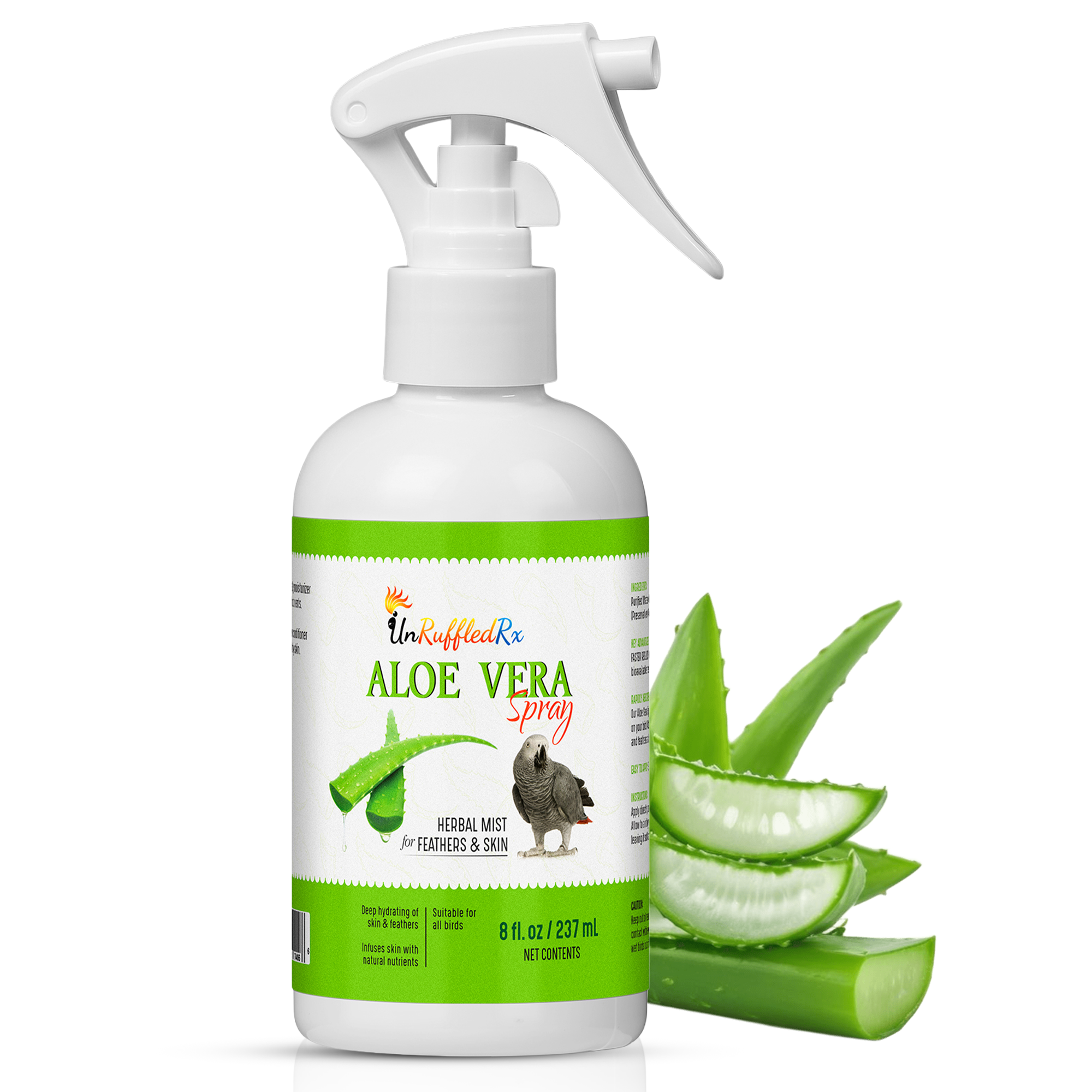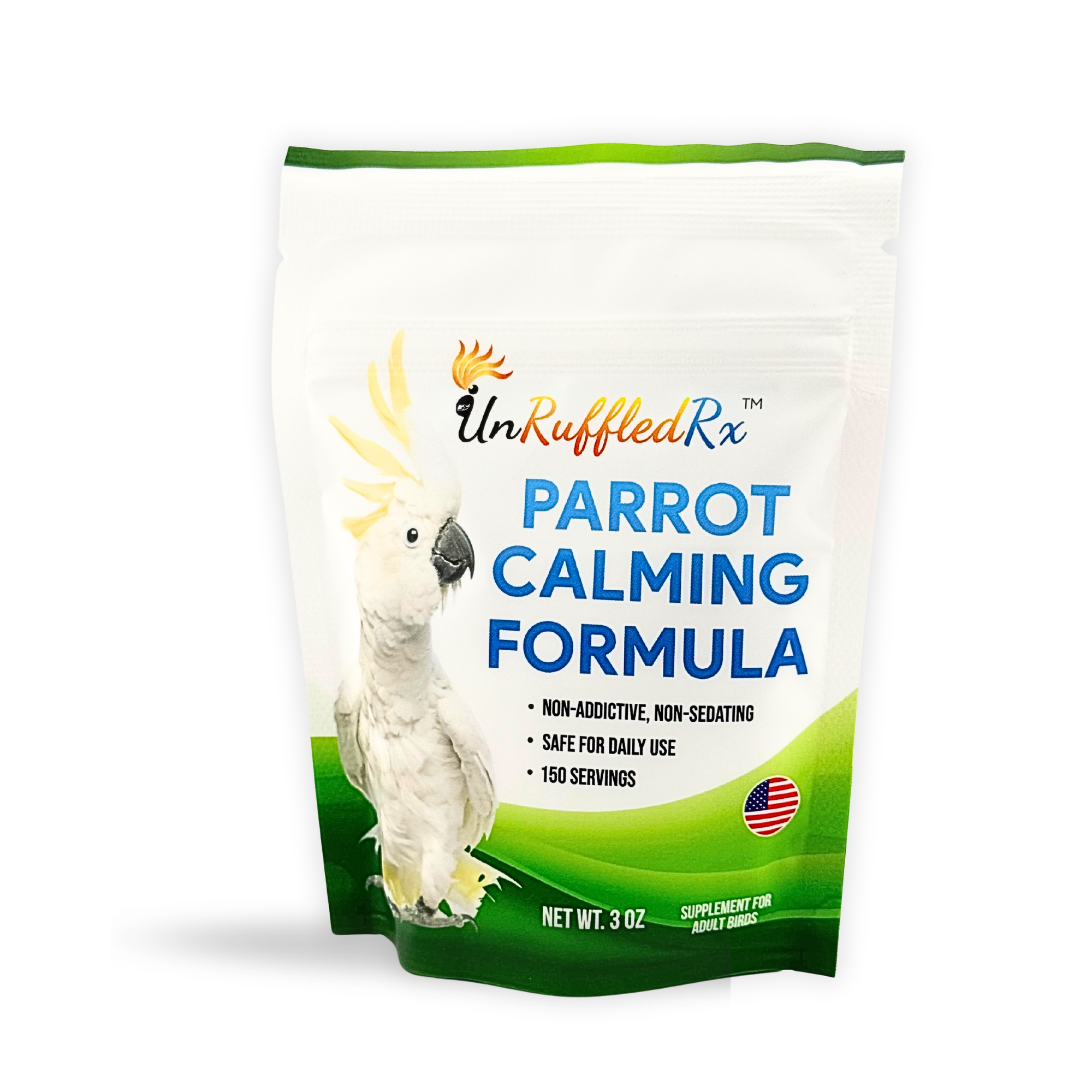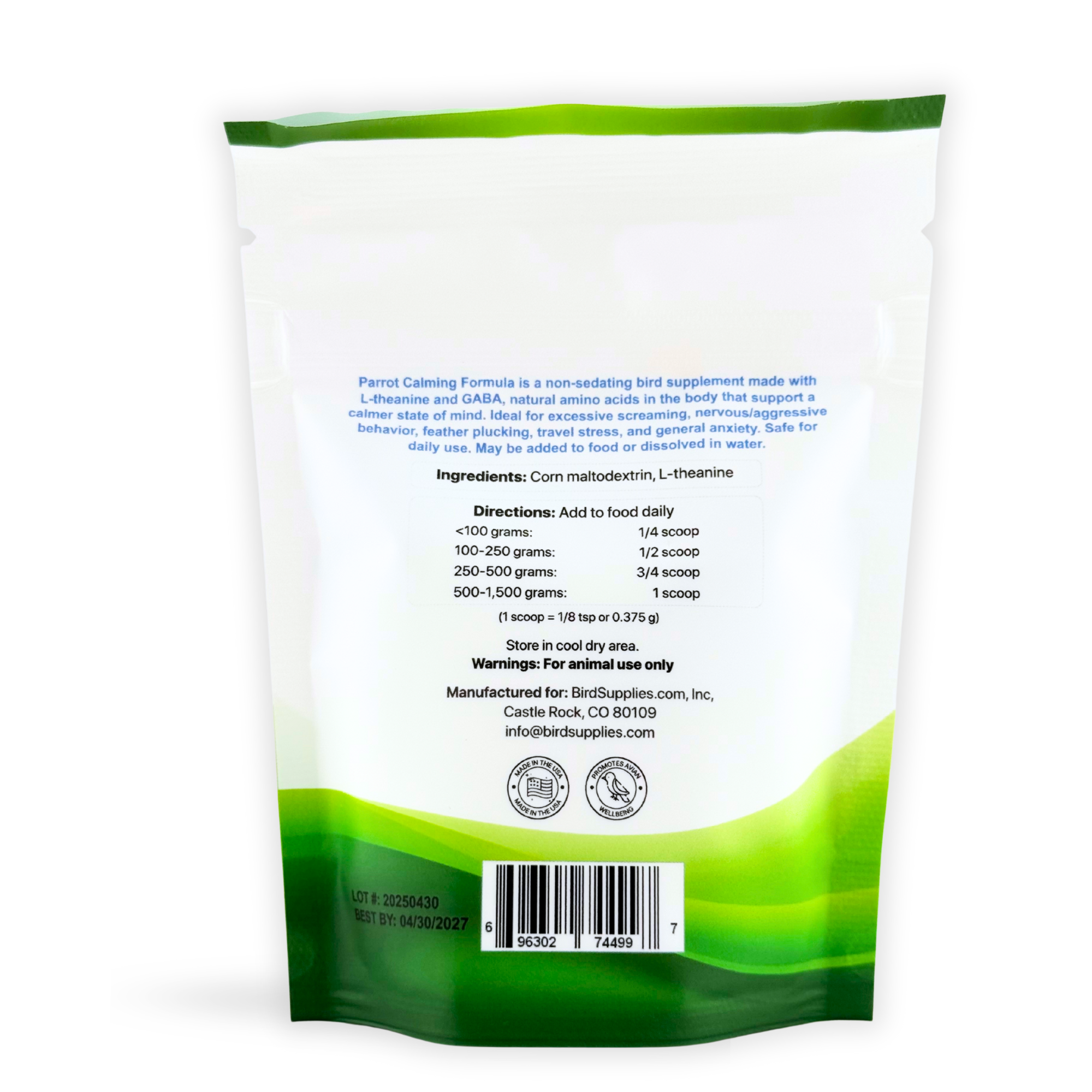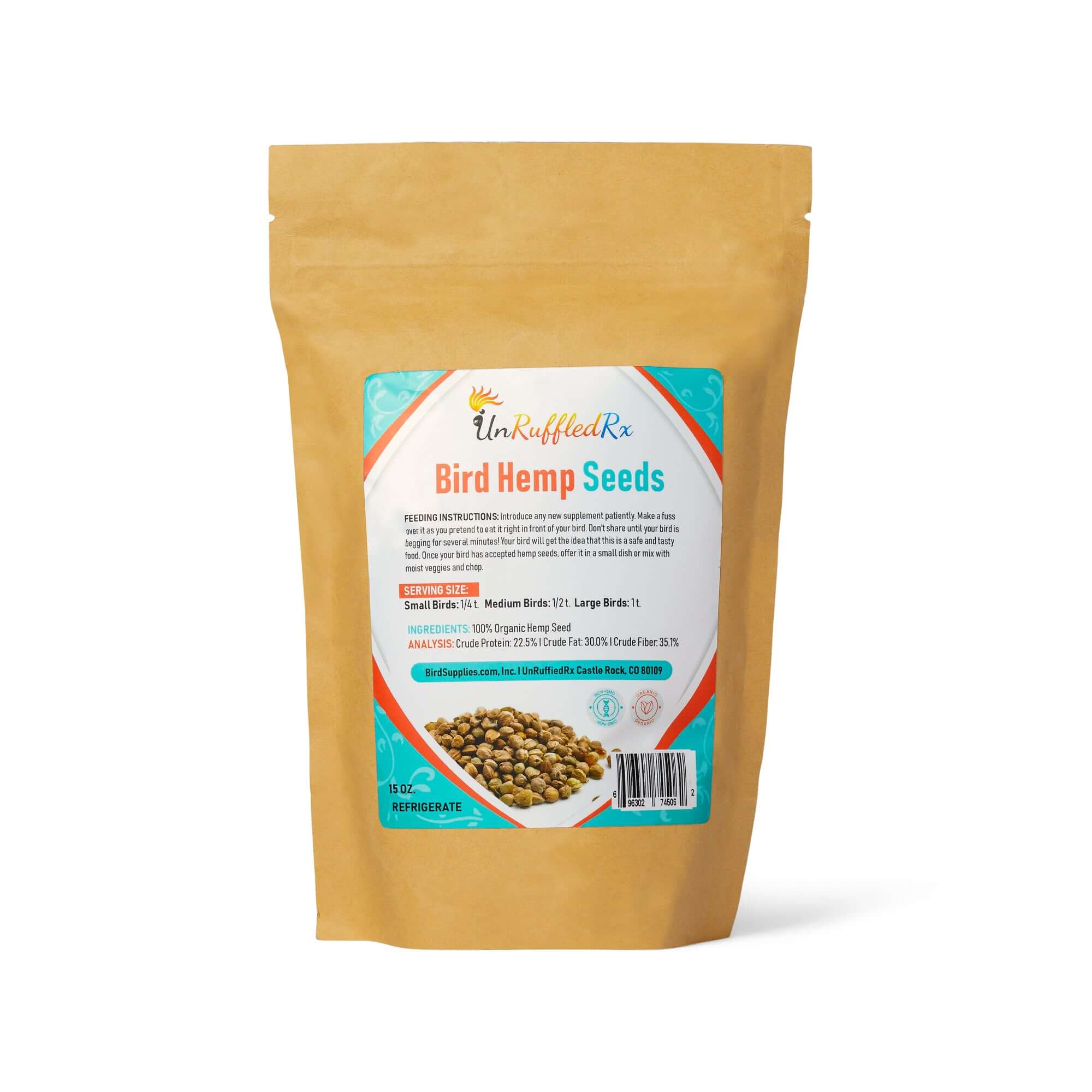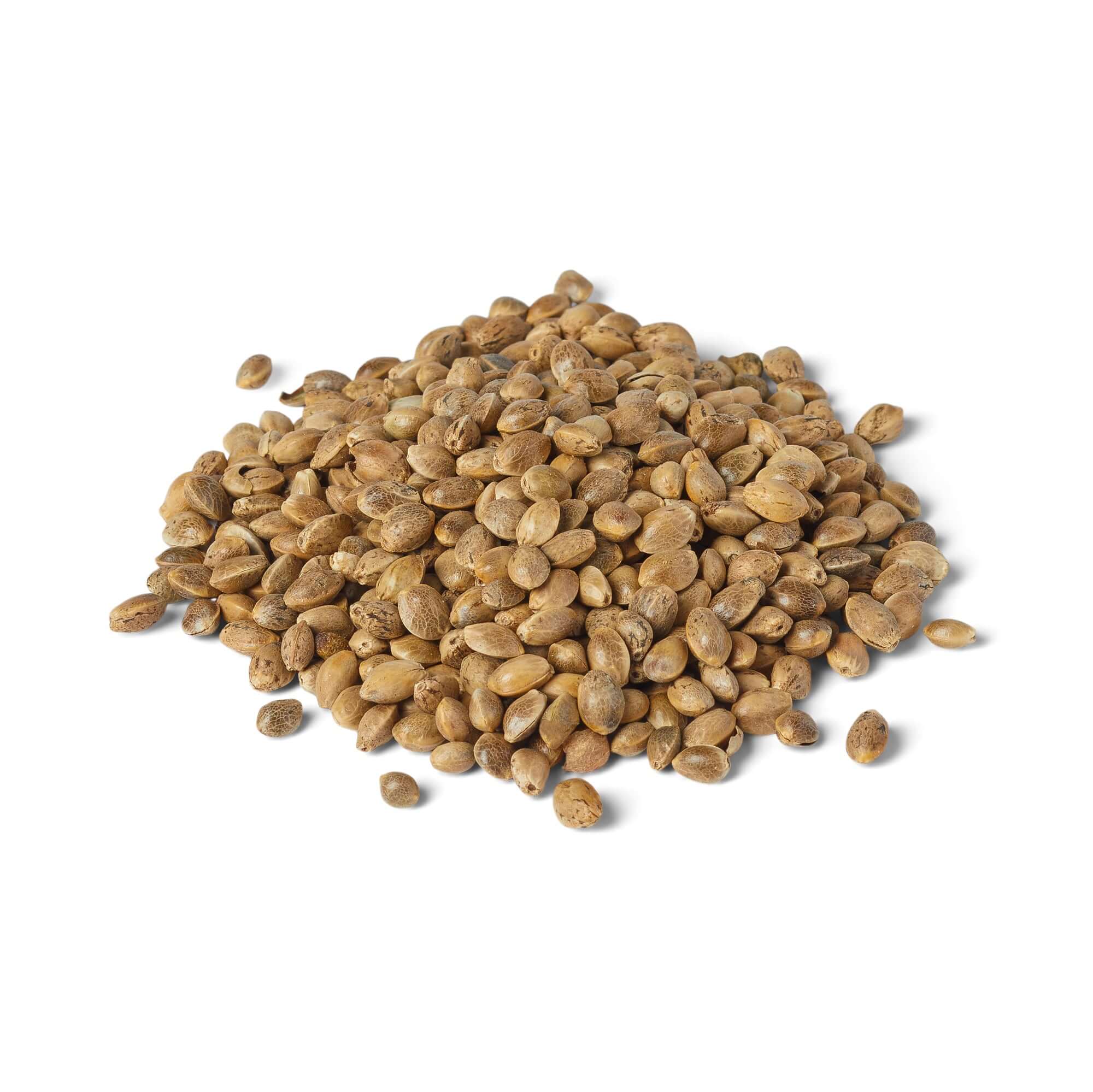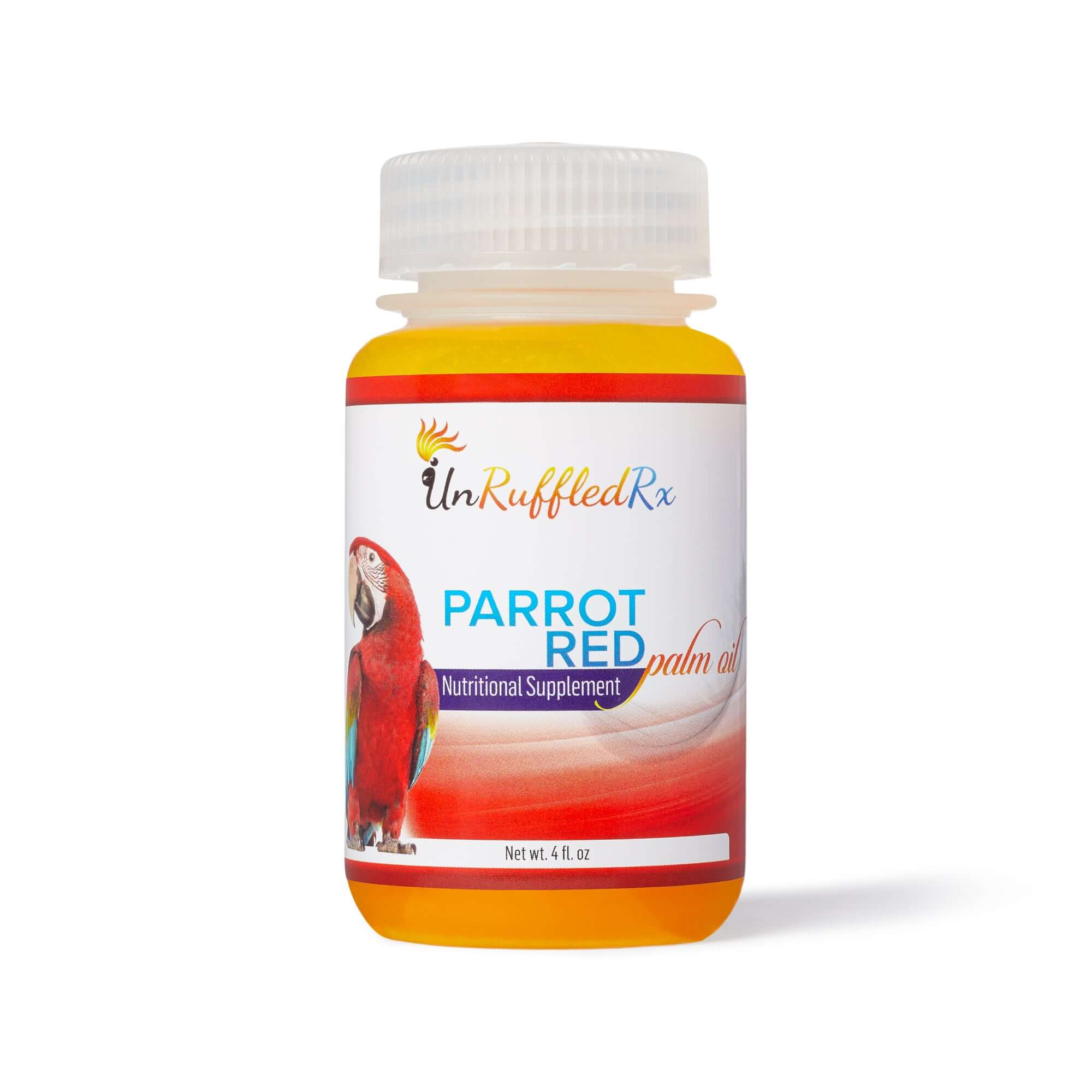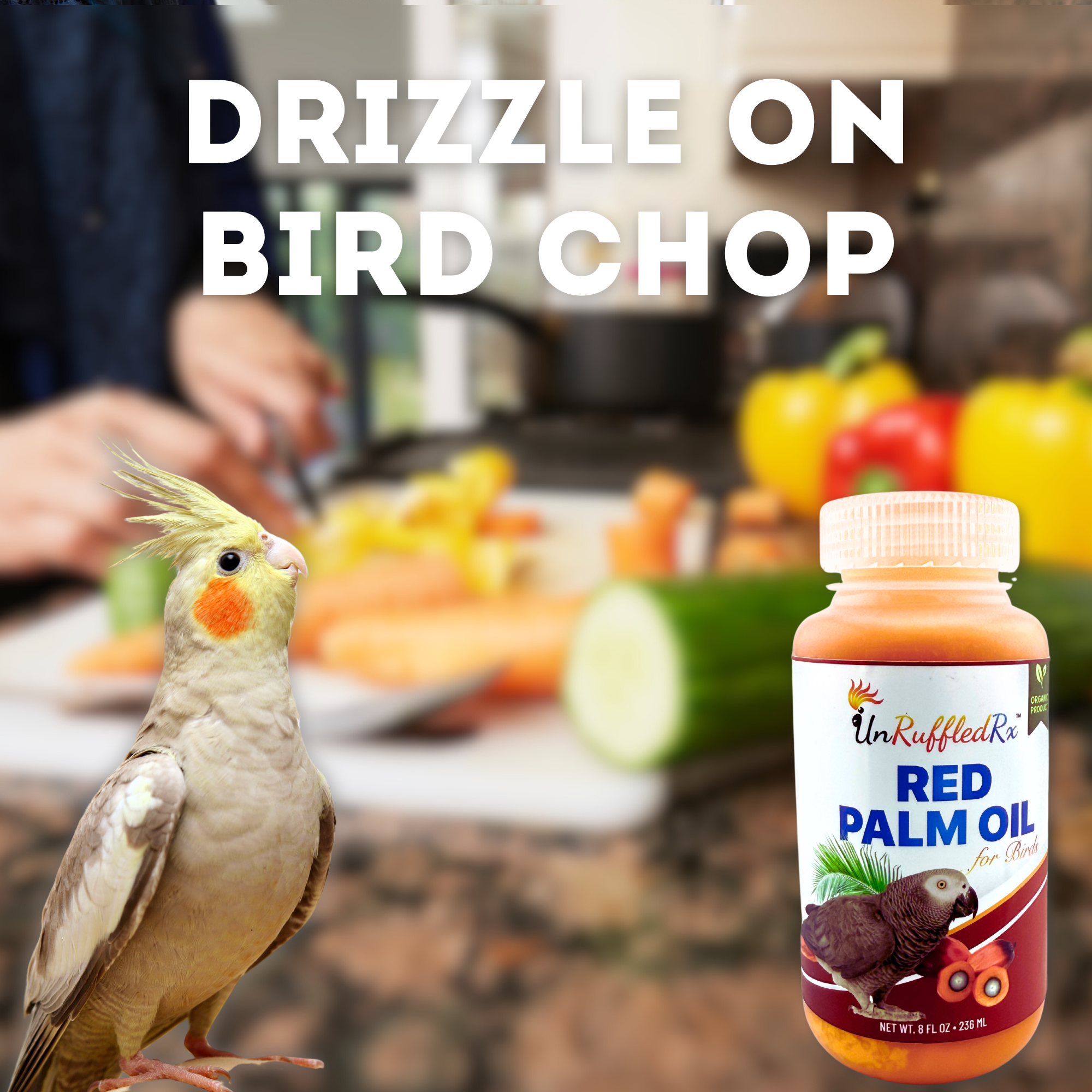- What Science Says About Parrot Intelligence
- Create a Puzzle-Filled Environment
- Start Clicker Training
- Feed a Brain-Boosting Diet
- Take Your Bird on Safe Adventures
- Let Them Make Choices
- Set Up Brain-Boosting Routines
- Use Our 4-Week Brain Boosting Plan
- Final Thoughts + Sales Bridge
Think your parrot’s already smart? You’re right—but they can get even smarter! 🧠
Parrots are some of the most intelligent animals on the planet, with brains wired for learning, problem-solving, and even talking back (you know what we mean). But just like us, they need daily mental challenges to stay sharp, happy, and well-behaved.
In this post, we’ll cover 7 fun, research-backed ways to boost your bird’s brainpower through training, toys, tasty foods, and everyday enrichment. Plus, we’ve included a simple 4-week brain-boosting plan you can start using today. Ready to unlock your parrot’s full potential? Let’s go! 🦜✨
What Science Says About Parrot Intelligence
Their Brains Are Built Like Ours
Okay, maybe they don't have a Netflix addiction or a coffee habit, but your parrot’s brain is shockingly similar to yours. Scientists have discovered that parrots have a brain structure called the nidopallium caudolaterale —that’s the avian version of our prefrontal cortex. Basically, it’s the decision-making, memory, and problem-solving hub. 🧠
This explains why your bird can figure out how to open their food container, mimic your laugh, or “argue” with the vacuum cleaner. They're not just fluff and feathers—they’re wired for complex thinking!
Why Mental Stimulation Matters
Just like humans, parrots need a daily dose of "brain workouts." Without regular mental challenges, boredom creeps in—and bored birds find very creative ways to entertain themselves. (Yep, we’re talking about feather plucking, screaming, and furniture -chewing.)
When you add stimulating activities like foraging, training, or even new scenery, you’re not just entertaining your parrot—you’re supporting their emotional health and brain development. It’s enrichment that feeds their soul *and* their smarts. 🎯
How This Helps With Behavior
Here’s the secret sauce: a stimulated brain is a calmer brain. When your parrot is mentally engaged, they’re less likely to act out, throw tantrums, or spiral into anxiety-driven behaviors. In fact, enrichment is one of the top things avian vets and behaviorists recommend for preventing and reducing problem behaviors.
Think of enrichment like birdie therapy—it gives your parrot healthy ways to express natural instincts, builds confidence, and helps them feel more secure in their world. The best part? It’s fun for both of you. Let’s keep going and dive into the easy ways to make this happen. 🦜💡
Create a Puzzle-Filled Environment
Add Foraging Toys
In the wild, parrots spend up to 6 hours a day searching for food. At home? Their meal shows up in the same bowl, in the same spot, at the same time. Boring! 😴

Foraging toys flip the script and turn mealtime into a brain game. Whether it's shredding, twisting, or flipping lids to find a treat, foraging taps into your bird’s natural instincts—and makes their brain work for its reward. Start simple with a paper cup over a treat, then work up to more advanced toys from our foraging collection.
Rotate Toys Weekly
Even the smartest toy gets old if it’s sitting in the same spot day after day. That’s why rotating toys is one of the easiest ways to keep your parrot mentally engaged. It’s like rearranging the furniture in their playroom—and trust us, they notice!
Set a reminder to swap out 2–3 toys each week. Bonus tip: Store retired toys in a box with a few teaspoons of bird safe herbs (like chamomile or lavender) to refresh the experience when you bring them back.
Use Different Levels of Difficulty
Just like puzzle apps on your phone, your bird needs easy wins and stretch goals. Start with toys they can master quickly to build confidence, then introduce ones that take a little more brainpower—like multi-step puzzle toys or those with hidden compartments.
Keep things interesting by mixing up toy styles: shreddables, spinners, drawers, or even DIY puzzles made from cardboard tubes and bird-safe paper. The key is to challenge without frustrating—and celebrate the little “aha!” moments along the way. 🧩👏
Start Clicker Training
Why It Works
Clicker training turns your parrot into a little learning machine. 🔥 It’s based on positive reinforcement—when your bird hears a *click* followed by a treat, their brain lights up and says, “Hey, I want to do that again!” It’s fun, fast, and incredibly effective.
Clicker training works because it taps into how birds naturally learn: by associating behaviors with outcomes. You’re basically teaching your bird a new language where the *click* means “You nailed it!” The best part? Training strengthens your bond and builds trust while giving their brain a solid workout.

Easy Tricks to Start With
You don’t need to teach your parrot how to recite Shakespeare (unless they’re into that). Start with easy, confidence-boosting behaviors like:
-
Target training – Touching their beak to a stick
-
Step-up – Moving from perch to hand on cue
-
Spin– Turning in a circle for a treat
Keep sessions short (3–5 minutes is perfect), always end on a win, and use a high-value reward—like a sunflower seed or a nibble of almond. Birds love the challenge, and you’ll love watching them learn in real time.
Link It to Emotional Wellness
Training isn’t just about tricks—it’s therapy. For real. Parrots thrive on purpose, and clicker training gives them exactly that. It builds confidence, reduces fear, and gives anxious birds a sense of control in their world.
Got a bird who’s cage-bound or hand-shy? Training can help them reframe how they see you and their environment. It's okay to start training through the cage bars. One click at a time, you're boosting their mood and their mind. 🙌
Feed a Brain-Boosting Diet
Key Nutrients for Brain Health
You can’t build a smart brain on junk food—and the same goes for parrots. 🧠 What your bird eats plays a huge role in how well their brain functions. A balanced diet fuels their memory, focus, mood, and even behavior.
Look for foods rich in Omega-3’s (like hemp, flax and chia seeds), B vitamins (found in leafy greens and whole grains), and antioxidants (think colorful veggies). These nutrients support brain tissue, reduce inflammation, and keep those little neurons firing fast and strong.
Add Variety With Chop & Sprouts
Want a simple way to supercharge your bird’s nutrition? Start with chop and sprouts. Chop gives you the freedom to mix veggies, grains, and herbs into a rainbow of health. Sprouts add living enzymes and natural vitamins your bird’s brain loves.
Switch things up each week to keep it exciting. One week it’s red bell pepper, sweet potato, and broccoli. The next? Bok choy, quinoa, and basil. Your bird’s gut (and brain) will thank you. Try pairing your fresh chop with OmegaGlow for brain-loving plant-based fats, or sprinkle on SereniTea Calming Herbs for an extra layer of wellness.
Supplements That Help
Even with a great diet, some birds need a little extra support—especially during molting, stress, or aging. That’s where targeted supplements shine. A daily multivitamin like FeatherUp can fill in nutritional gaps with key nutrients like biotin, B-complex, and amino acids.
For birds that need joint, mobility, and anti-oxidant support, UnRuffledRx Joint Relief is loaded with turmeric and natural anti-inflammatories. And don’t forget to add hemp seeds for healthy fats and skin support—it’s especially great during molting season.
A well-fed brain is a calm, curious, and happy brain. And that’s what we want, right? 🥦🦜
Take Your Bird on Safe Adventures
Hiking, Travel & Exploration
Your parrot wasn’t meant to spend life staring at the same four walls. When you safely introduce new environments—like going for a walk, a hike, or even a car ride—you activate your bird’s senses and boost their brain in a big way. Think of it as a field trip for their mind! 🧭
With a properly fitted bird harness, short adventures can become part of your enrichment routine. If your bird isn't quite ready for the great outdoors, even riding in a secure carrier on the porch or near a window gives them fresh experiences to think about and process.
The Value of Natural Light & Sound
Birds thrive when they experience the rhythms of nature—sunlight, wind, and the sounds of life outside. Natural light supports vitamin D synthesis, which is critical for calcium absorption and mood regulation. And hearing chirping birds, rustling trees, or neighborhood sounds gives your parrot new things to listen to and mimic.
If heading outside isn’t an option, you can still bring nature to them with a bird-safe patio setup, a window perch, or even playing nature soundtracks indoors. Enrichment doesn’t always have to be complicated—it just needs to be intentional.
Safety Tips for Outside Time
Before stepping outside with your bird, be sure to prep! Start by using a well-fitted harness and practice indoors first. Keep your parrot close to your body and away from potential dangers like other pets, loud noises, or sudden gusts of wind.
A Pak O Bird Backpack Carrier is another great option for outdoor time—especially if your bird isn’t harness-trained yet. Add a favorite perch and a toy to make it feel safe and fun. And never leave your bird unattended, even in a secure aviary. Curious predators, loud noises, or surprise weather can turn an adventure into a stressor fast.
With a little planning, outdoor time can become one of your bird’s favorite enrichment experiences. 🌞🦜
Absolutely! Here's your next section with the same upbeat, expert tone, and a note about force-free training woven in: ---
Let Them Make Choices
What a "Yes Space" Looks Like
Parrots are curious, opinionated little creatures—and they thrive in spaces where they feel safe exploring. A “yes space” is a designated area where your bird can play, chew, climb, and forage without constant correction. No “no’s,” no power struggles—just pure, safe freedom to be a bird. 🪶
Set up a tabletop play stand, window perch, or a corner of their room with a few safe materials like bird-safe shreddables, swings, and natural branches. It’s a simple way to promote exploration while encouraging natural behaviors.
Encouraging Independent Thinking
When you let your bird make small decisions—like choosing a toy, a perch, or whether to train—you’re actually building up their confidence and critical thinking skills. These choices make them feel secure and respected, which in turn reduces reactivity and fear-based behaviors.
It’s also a key principle of force-free training: giving your parrot the freedom to say “yes” or “not right now.” Respecting those boundaries creates a learning partnership instead of a power struggle. The more your bird feels in control of their environment, the more curious and calm they become.
Trust-Building Through Autonomy
Choice is empowering—for humans *and* parrots. Giving your bird more say in how they engage with you builds trust, reduces anxiety, and strengthens your bond over time. This is especially important for shy or rehomed birds who may not have had much control in the past.
Try offering choices during playtime or training. “Do you want to do target training or spin?” “Which perch do you want to go to?” These tiny moments of autonomy show your bird that you’re listening—and that you’re a safe partner they can count on. 🧡
Set Up Brain-Boosting Routines
The Power of Predictable Patterns
Birds love surprises… but only the fun kind. When it comes to daily life, they actually thrive on routines. Having a predictable rhythm gives your parrot a sense of security—helping them feel calm, confident, and ready to learn.
Simple routines like breakfast chop, midday foraging, and evening wind-downs help your bird know what to expect. That sense of safety opens the door for exploration and learning. Just like kids in a classroom, parrots learn best when their environment feels stable.
Weekly Themes for Stimulation
Routines don’t have to be boring. Try assigning each week a fun theme! One week can focus on foraging challenges, the next on new textures, followed by training games or sound play. This keeps enrichment fresh without overwhelming you (or your bird).
The goal is variety with structure. Create a loose calendar of toy swaps, new veggies in chop, or short outdoor time to activate different parts of your bird’s brain—all while keeping a predictable flow. Themes = fun for them and easier planning for you!
Morning & Evening Brain Boosts
Think of your bird’s day like a sandwich: the morning and evening are your top chances to pack in brain-building fun. Mornings are perfect for chop + sprouting toppers like OmegaGlow or a sprinkle of SereniTea to set the tone.
Evenings are a great time for calming play, puzzle toys, or clicker training. Keep things low-stress and predictable to help your parrot wind down before bed. Bonus points if you dim the lights or cover the cage at the same time each night—it supports better sleep, which is crucial for learning and emotional balance.
Routines don’t just keep your parrot healthy—they help unlock their full potential. 🧠✨
Use Our 4-Week Brain Boosting Plan
Week 1: Foraging Fun
This week, let’s kick things off by getting your parrot to work for their snacks! Start by introducing 1–2 new foraging toys or make a few DIY options using paper cups, coffee filters, or cardboard tubes. Hide their favorite treats inside to spark curiosity and encourage natural foraging behavior.
You can also scatter a few pellets or sprouted seeds around their play area for a little “food treasure hunt.” Remember: foraging isn’t just fun—it taps into your bird’s wild smarts. 🧠🌾
Week 2: Trick Training Time
Now that your bird is thinking and moving, it’s time to start clicker training! Keep it simple and upbeat—just 5 minutes a day to teach tricks like targeting, spinning, or stepping up on cue. Use a clicker and a tasty reward to mark success and keep your bird motivated.
If you're new to this, check out our Clicker Training Guide to get started. Trick training builds confidence, deepens your bond, and turns learning into play. 🎯
Week 3: Sensory Stimulation
This week is all about lighting up your bird’s senses! Introduce a new texture (like a vine ball or palm leaf shredder), rotate in a spinning toy for visual stimulation or bell toy for sound, or play nature sounds or gentle classical music during playtime. Bonus idea: hang a safe branch from outdoors in their play space to explore.
Sprinkle in calming support like SereniTea Calming Herbs or offer a foot-soaking bowl with aloe spray for a spa-style sensory session. 🌿🛁
Week 4: Explore the World Together
You’ve laid the groundwork—now it’s time to venture out. Try a short harness walk, a front porch sit, or a car ride in a travel carrier with a view. Let your bird experience new sights, sounds, and smells (safely, of course). Outdoor time is one of the most powerful ways to engage their brain.
Wrap up the week by reviewing your bird’s favorites and rotating in the activities they responded to best. Enrichment is a journey, not a checklist—so keep it fun, flexible, and based on what your bird loves most. 🌎🦜
This 4-week plan isn’t just a challenge—it’s a celebration of your bird’s brilliance. Let’s keep those neurons firing!
In conclusion...
Now that you know your bird’s mental stimulation and enrichment needs, it’s time to put those insights into action. You don’t have to reinvent the wheel—I’ve created trusted, vet-informed products to make it easier for you to support your bird’s brain, body, and behavior.
From OmegaGlow for healthy fats that support brain function, to SereniTea Calming Herbs for gentle, mood-balancing support, and Joint Relief to keep them active and curious—each product was designed to meet a real need in your bird’s daily routine.
Because enrichment doesn’t have to be overwhelming—it just has to be intentional. Let’s help your parrot thrive, one small win at a time. 🧠🦜
Related Posts:
Insight Into African Grey Parrot Intelligence
Ultimate Guide to Foraging Toys
References:
Bastos, A. P. M., Mioduszewska, B., Uomini, N., Laland, K. N., & Auersperg, A. M. I. (2023). Crowdsourcing and phylogenetic modelling reveal parrot tool use is not rare [Preprint]. bioRxiv. https://doi.org/10.1101/2023.08.14.553302
Benedict, L., Patel, M., Miles, J., & Furlong, M. (2022). A survey of vocal mimicry in companion parrots. Scientific Reports, 12, 21533. https://doi.org/10.1038/s41598-022-24335-x
Garcia de Jesús, E. (2024, September 19). Parrots may offer clues to how our intelligence evolved. Science News Explores. https://www.snexplores.org/article/parrots-evolved-intelligence-bird-brain
Gutiérrez-Ibáñez, C., Iwaniuk, A. N., & Wylie, D. R. (2018). Parrots have evolved a primate-like telencephalic-midbrain-cerebellar circuit. Scientific Reports, 8, 2207. https://doi.org/10.1038/s41598-018-28301-4
Olkowicz, S., Kocourek, M., Lučan, R. K., Porteš, M., Fitch, W. T., Herculano-Houzel, S., & Němec, P. (2016). Birds have primate-like numbers of neurons in the forebrain. Proceedings of the National Academy of Sciences, 113(26), 7255–7260. https://doi.org/10.1073/pnas.1517131113
Pepperberg, I. M., & Hartsfield, L. A. (2023). A study of executive function in grey parrots (Psittacus erithacus): Experience can affect delay of gratification. Journal of Comparative Psychology. https://doi.org/10.1037/com0000361
Rössler, T., & Auersperg, A. M. I. (2022). Recent developments in parrot cognition: A quadrennial update. Animal Cognition, 26, 9–20. https://doi.org/10.1007/s10071-022-01733-2
Wirthlin, M., Chang, E. F., Guo, J. U., et al. (2018). Parrot genomes and the evolution of heightened longevity and cognition. Current Biology, 28, 4001–4008.e7. https://doi.org/10.1016/j.cub.2018.10.050
Link to this blog
Burroughs, D. (2025, May 26). 7 ways to boost your parrot’s intelligence today. BirdSupplies.com. https://birdsupplies.com/blogs/news/7-ways-to-boost-your-parrot-s-intelligence-today
Diane Burroughs, LCSW, brings over 30 years of experience helping bird lovers build stronger, healthier bonds with their parrots. With a foundation in psychotherapy and Applied Behavior Analysis (ABA), Diane combines proven behavioral science with simple, real-life strategies anyone can use. Through her books, behavior consultations, and UnRuffledRx parrot wellness products, she’s dedicated to helping real bird owners create trust, confidence, and a lifetime of positive experiences with their feathered companions.
Diane's products been featured in the Journal of Avian Medicine and Surgery and at ExoticsCon, a national conference for exotic animal veterinarians. Her bird collars and supplements are trusted by avian vets and stocked in vet clinics across the U.S. With thousands of individualized behavior plans under her belt, Diane’s mission is simple: to help parrots and their people thrive together.
TAGS: #SmartBird #ParrotIntelligence #BirdEnrichment
SHARING IS CARING! 📣
Love what you read? Help spread the word on Facebook & Instagram 🌟
💬 Leave a comment below and let us know your thoughts!
